Luke 24:1-12
1
Some of us here have the mud of Jerusalem on our shoes. Well, not Jerusalem, exactly – but we were at St Blane’s Chapel for the Easter Morning Sunrise Service, and if three trips to Ynys Enlli, off the tip of the Llyn Peninsula in North Wales, where 20,000 saints are buried, was held to be worth three pilgrimages to Rome, then five or six visits to our own holy site must be worth something.
You will see photos! Most of us had cameras or phonecams, and the pictures will be on Facebook before the day is out.
But that’s contemporary life.There are cameras everywhere! There’s very little that goes on very little we do, without being captured on camera. The average inhabitant of these islands is caught on CCTV more than 70 times a day. Thank goodness we live on Bute…
We’ve come to expect that anything significant will be snapped, or phonecammed, or videoed. Do you remember this?
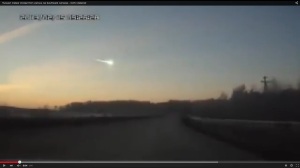
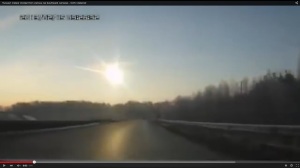
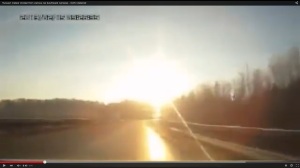
It’s the Russian meteor of 15 February 2013. It weighed about 13,000 tonnes, more than the Eiffel tower, and it was about 20 metres across. It came in at about 30,000 miles an hour and exploded eighteen and a half miles up, with the force of about 25 Hiroshima-sized atomic bombs. And it was caught on hundreds of cameras, on walls, roofs and car dashboards.
But here’s something quite different.
2
I love this picture. It’s Matthias Grunewald’s glorious representation of the Resurrection. Some of you asked me about this painting, at which we were looking during the Maundy Thursday Communion,
and it’s also by Grunewald. It’s also from his staggering Isenheim Altarpiece, painted between 1512 and 1516, with carvings by Nicholas of Hagenau.
Its array of panels tells the story of faith, and explores its meaning in holy lives; the central panel depicting the Crucifixion which so takes us to the heart of the Gospel that a copy of it hung over Karl Barth’s desk, so that the great theologian could measure his work against God’s work of salvation wrought in Christ.
Back to Grunewald’s Resurrection, also a part of the enormously complex artwork which is the Isenheim Altarpiece, and which, as I say, I also love. You might find that a bit surprising as I tell you this.
Sometimes, after I’d been shouting at the television yet again during University Challenge, or conspicuously rolled my eyes at something said on the news, or read in the paper, I used to ask my family if I was getting grumpier as I got older. When they just started saying “Yes, since you ask…” I stopped, because I know it’s true. I rolled my eyes, and probably even snorted, a few years ago, though, when at Easter an Anglican bishop was reported in the press as having said that had there been CCTV cameras in the garden with the grave, on the morning of the first Easter day, they would have captured an enormous flash. Actually, I didn’t just snort, or roll my eyes. I shouted at the radio. I was very rude.
You see, Grunewald’s Resurrection is a monumental attempt to say something that can’t be said, to convey something that can’t be conveyed. Look at it!
The highest, sublimest of human art and skill, in the service of the highest of all, that than which nothing greater can be conceived. And even in its magnificence, it proclaims that all art, all skill, all craft and achievement and imagination, falls short, can only gesture in the direction of the glory of God and the mystery of our salvation in Christ.
And the good Bishop thinks he can reduce all that ineffable mystery to a bright flash caught on a CCTV camera in a first-century carpark outside a garden.
Why would he do that?
Because, for him, the most important thing about the Resurrection isn’t that it’s a mystery. It isn’t that it’s beyond our explaining, something so enormous, something that so turns our world upside down that we can barely speak of it, let alone explain it, none of that. No, the most important thing for the good bishop is that we say that the Resurrection is a fact.
And the sad thing for this way of thinking, the real pity, is that there weren’t CCTV cameras on some factory or storehouse wall overlooking Joseph’s loaned grave in the garden in which Jesus lay. Because they would have captured a bright flash, the way the CCTV and dashboard cameras in Russia captured the explosion of the Chelyabinsk meteor.
And it’s a way of thinking that completely misses the meaning of the Resurrection.
3
The way Mark tells it, the story of Easter Morning has three women coming to the grave to perform the rituals of deep respect for Jesus that the Sabbath, intervening after the appalling trauma of Good Friday, had prevented. As soon as the watery light of early morning turns the dark shapes of night into the hazy forms of a garden, they arrive, and it’s only now that they begin to ask themselves how on earth they are going to do what they have come to do. How will they move the stone they know will be there?
And they ask themselves this on the way. It’s an important part of Mark’s story; it’s important to the way the logic of the plot unfolds. The women have expectations, says Mark, and they aren’t met. Things are not as they expect to find them. “Silly us!” they were saying, as Mark presents it; “How are we going to get in past that great big stone that will be there?” And the stone, against all expectation, has been moved.
Luke doesn’t tell it that way. According to Luke, the women arrive at the grave, and it’s open, the stone rolled away. It’s just how things are. You wouldn’t think from Luke that this had ever been a problem that the women had anticipated, but didn’t know how they would solve.
Luke, you see, is already shifting his emphasis.
Back to Mark, though.
As they entered the tomb, they saw a young man dressed in a white robe sitting on the right side, and they were alarmed. ‘Don’t be alarmed,’ he said. ‘You are looking for Jesus the Nazarene, who was crucified. He has risen! He is not here…”
And the young man adds that they will meet the risen Jesus in Galilee, just as he told them.
And then, there, Mark’s Gospel stops. Well, not quite, but we have nothing beyond verse eight of chapter sixteen, which is what follows this – and we’ll get to that in a moment.
Luke has not one man in white, but two – and not just in white robes:
[S]uddenly two men in clothes that gleamed like lightning stood beside them. In their fright the women bowed down with their faces to the ground, but the men said to them, ‘Why do you look for the living among the dead? He is not here; he has risen!
It’s the men in dazzling robes, in Luke, who frighten the women. But according to Luke, the women get a grip of themselves, and hear the men out as they expand mightily the words that the young man in Mark spoke.
‘Why do you look for the living among the dead? He is not here; he has risen! Remember how he told you, while he was still with you in Galilee: “The Son of Man must be delivered over to the hands of sinners, be crucified and on the third day be raised again.”’ Then they remembered his words
And having remembered Jesus’ words, according to Luke, they pulled themselves together, and went off to tell the other disciples – who, not to put too fine a point on it, don’t believe them, because they are just women, and these are the sorts of silly stories that silly women tell. Sorry, ladies…
Mark’s Gospel tells it quite differently. Now, we’ve known for well over a century and a half that we don’t have anything that’s original to Mark’s Gospel beyond verse eight of chapter sixteen. Maybe a mouse ate the last page of the original, maybe Mark meant to stop there, we don’t know. So Mark’s Gospel finishes like this, to adapt our pew Bible to R H Lightfoot’s immortal translation:
Trembling and bewildered, the women went out and fled from the tomb. They said nothing to anyone; they were frightened, you see...
They flee the tomb. They are terrified.
It isn’t the empty grave that creates faith.
That might seem an astonishing thing to say – but it’s a very important strand in the Gospels’ presentation of the Resurrection. It isn’t the empty grave that creates faith.
That’s why, in Mark’s story, the women flee from a bare historic fact – what a putative CCTV camera in the next field, or next garden, or on the wall of the next building, might have captured…
Because bare, historic facts are only so big. They can be captured on dashboard or CCTV cameras because they are of a certain order of magnitude – weighing about 13,000 tonnes, more than the Eiffel tower, about 20 metres across moving at about 30,000 miles an hour, exploding eighteen and a half miles up, with the force of about 25 Hiroshima-sized atomic bombs… That’s impressive. Had it hit the ground in a populated area, it could have been locally catastrophic. But that would have been the extent of it.
The resurrection is not quantatively bigger than that, but of an utterly different order. The empty grave in the garden is the smallest part of it. Three women flee, confused, from something they can make no sense of. Because the world has been redefined.
4
That seems to be almost too much for Luke. He needs to retell the story so that the women listen to the two men in shining garments:
‘Why do you look for the living among the dead? He is not here; he has risen! Remember how he told you, while he was still with you in Galilee: “The Son of Man must be delivered over to the hands of sinners, be crucified and on the third day be raised again.”’ Then they remembered his words
So the women now, according to Luke, go back to the others, and tell them what they have witnessed. And they aren’t believed, because they are women.
But now Luke adds something else. Peter feels the need to check the story out. So he goes to the grave himself.
Peter, however, got up and ran to the tomb. Bending over, he saw the strips of linen lying by themselves, and he went away, wondering to himself what had happened.
So all that Luke has done is to shift the confusion and disorientation from the women to Peter. But the perplexity remains. The empty grave makes no sense.
It isn’t the empty grave, it isn’t the bare, uninterpreted historic fact, it isn’t something that a CCTV camera might oversee and reduce to a simple image, that creates faith.
So what is it that does create faith?
5
Well, we don’t know how Mark’s Gospel would have gone on, but Luke goes on to tell us the story of the Road to Emmaus, and the two disciples who suddenly realize that the mysterious stranger who walks their way, and knows their grief, and lifts their spirits, and goes in with them to supper, where he shifts from being their guest to their host as he breaks the bread for them, is the Risen Christ.
And he tells us of their return to Jerusalem, to the others, still gathered in their confusion, and as they begin to blurt out the story of their encounter, the Risen Christ stands in the midst, and demonstrate that, so far from being a ghost, that he lives with the fullness of life in God, by saying what translates rather nicely as “See’s a daud o’ thon fish supper…”
John’s Gospel, of course, tells its own set of Resurrection stories, but starts from the perplexity of the two male disciples at the empty grave, Peter, and “the disciple whom Jesus loved.” They see, remember snippets, but stunned – and in one of the most astonishing little details in all Scripture, John tells us that “they went home.” That’s the first century equivalent of what we might call “informational overload.”
But Mary Magdalen is there, too. It’s always the women who are there, in the ambiguity and confusion. Theirs is a striking and compelling witness, which the New Testament takes much more seriously than the world around it did. Mary stays, and takes her perplexity into the garden, as the light levels slowly rise, another woman in a new world the shapes and forms of which she can barely make out.
And she meets a figure, who might know something. The gardener, probably. And she pours out her perplexity to him. And he speaks her name.
And she knows.
6
That’s what creates faith. The encounter with the Risen Christ. That’s what constitutes the Easter faith, and for us as much as them. We might regret, with our well-meaning bishop, that there were no CCTV cameras in the garden to capture the resurrection, but their footage would have told us no more than being there on the very morning told the women, or Peter, or Mary Magdalen.
And we are in no worse case than they.
Because this, here, this morning, is our encounter with the Risen Christ. Wherever two or three are gathered together. Where the Church is. Christ stands in the midst. Christ’s voice hails us through the Word written and preached. We encounter the Risen Christ, and we have faith.
No flash of light. Nothing a camera would record. Far bigger than that. Something even Grunewald, with his sublime artistry, could only gesture at.
For the world is stood upside down. And though everything looks exactly as it did, faith knows that everything is different.
For Christ is risen! He is risen indeed!
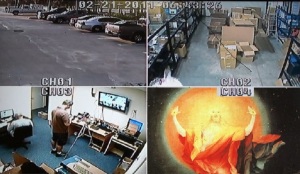
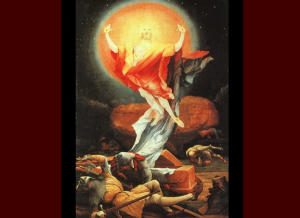
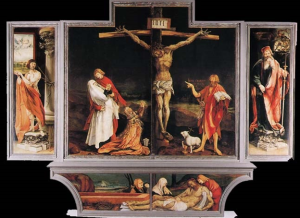
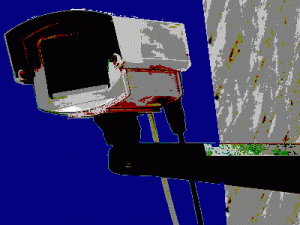
Hello! I’m at work browsing your blog from my new iphone 4!
Just wanted to say I love reading your blog and look
forward to all your posts! Keep up the excellent work!
By: hip hop instrumentals on August 6, 2018
at 6:57 pm